NIL ALT
Nil’s journey and practice in food justice and agriculture labour research has been developing over the last decade as the same time of our friendship with her. We have been talking, thinking and growing together over the years although sometimes in different geographical places. Her current research is on agricultural labour practices in orchards in Turkey. We invited Nil to Looking at the Garden Fence to share her research in the context of art as opposed to academia with hopes that it will inspire new communities.
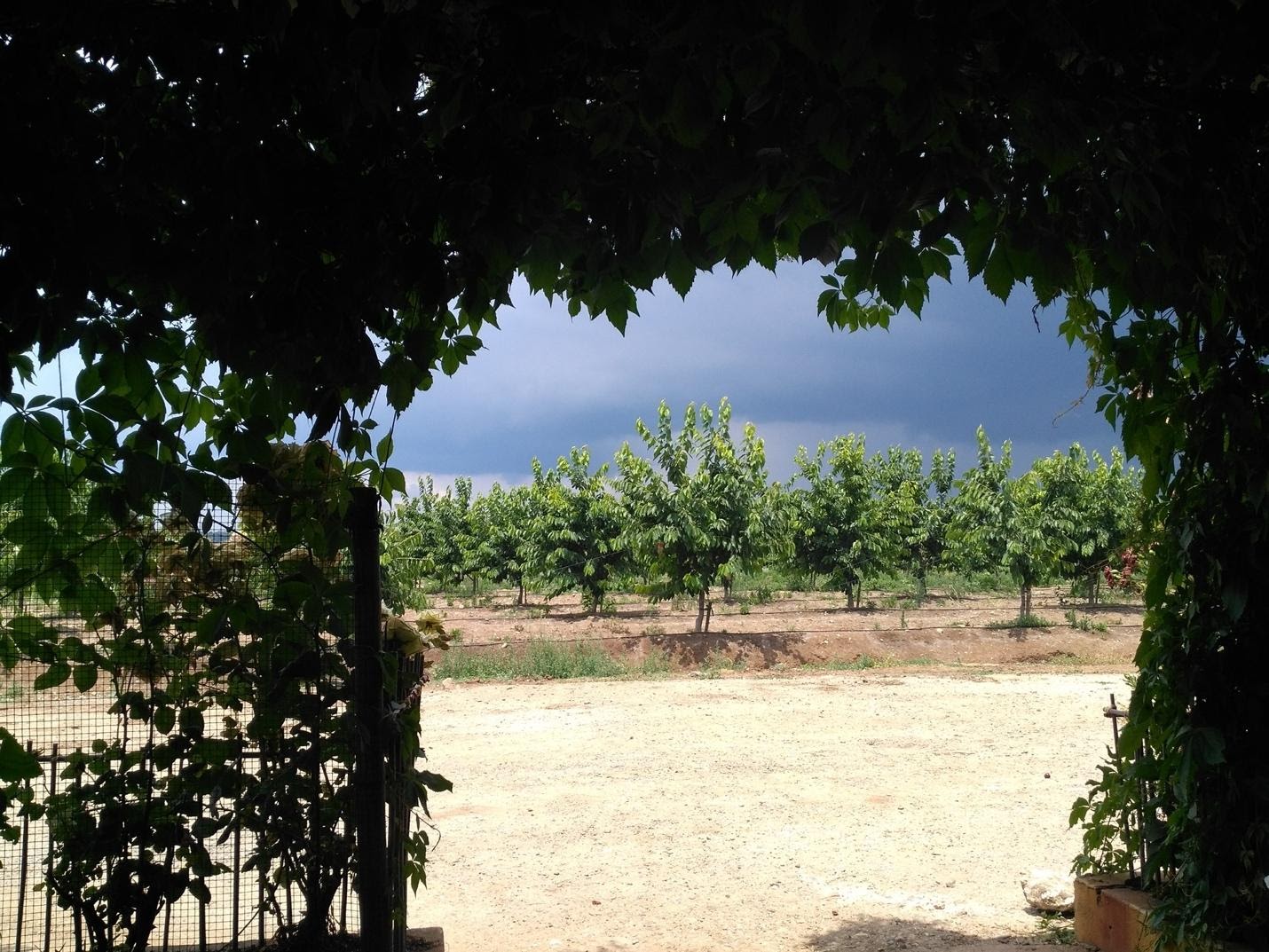
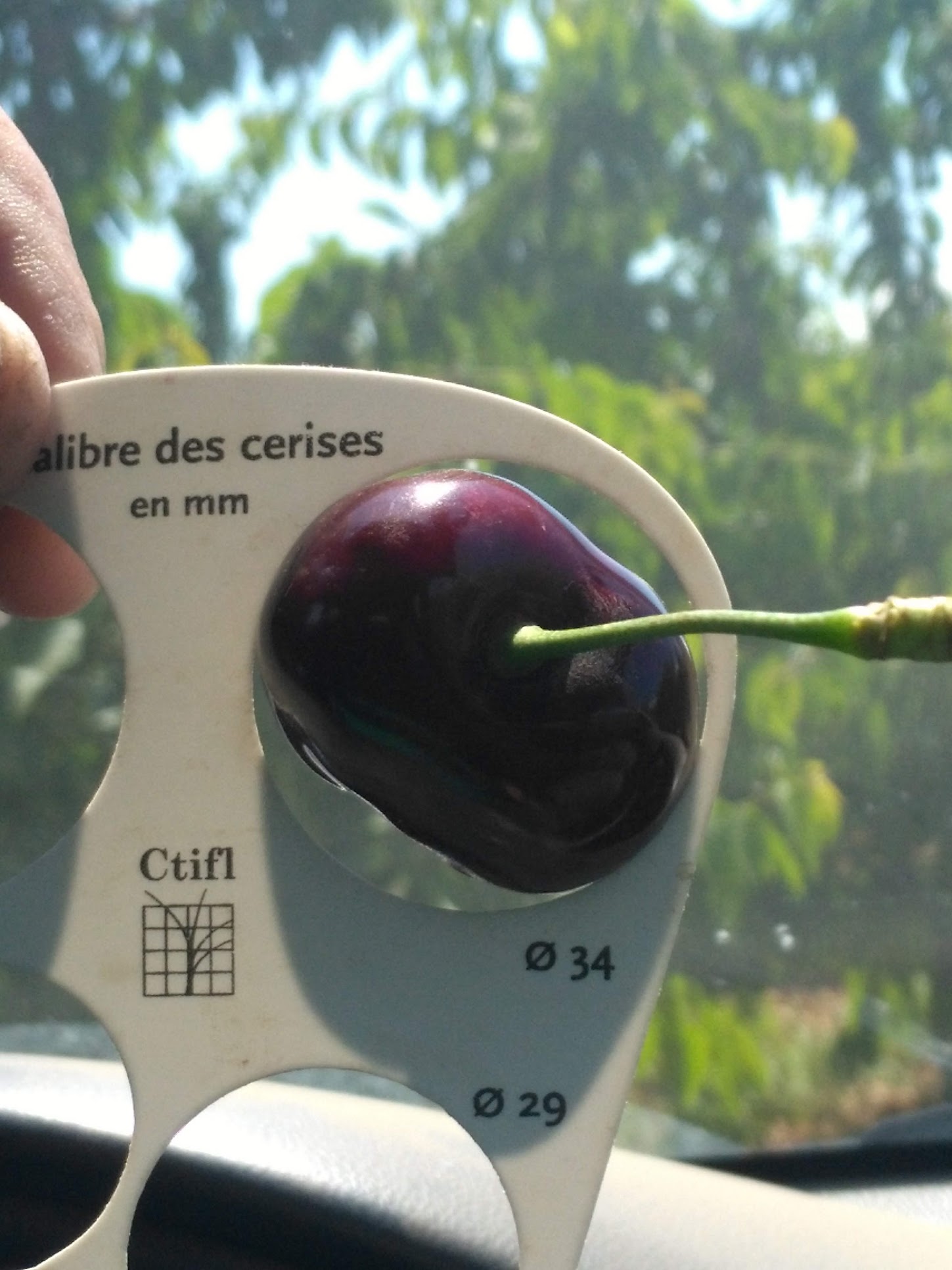
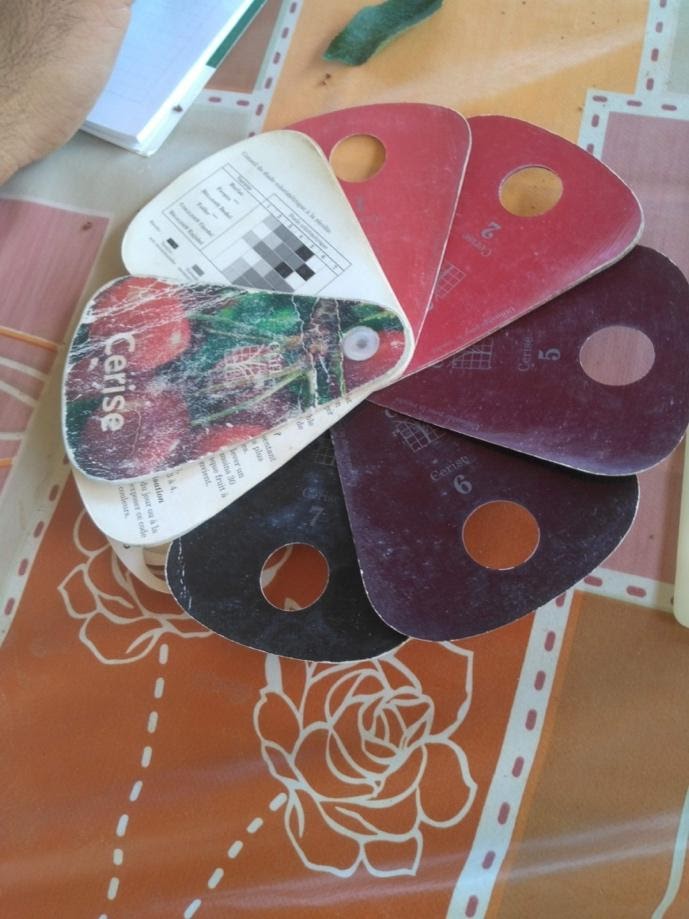
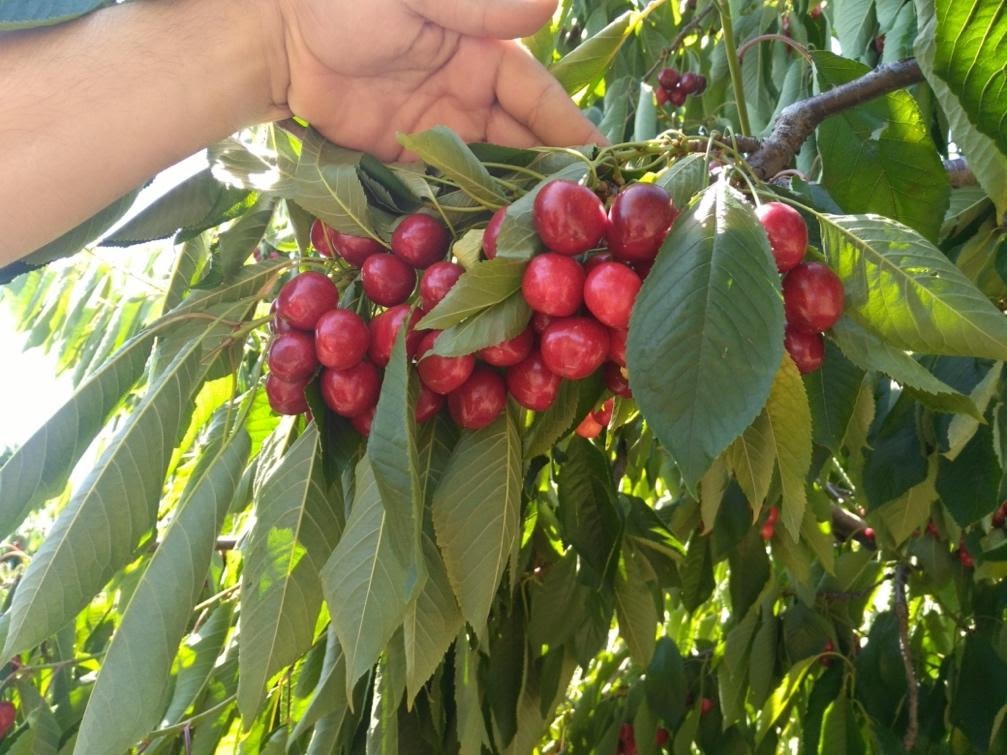
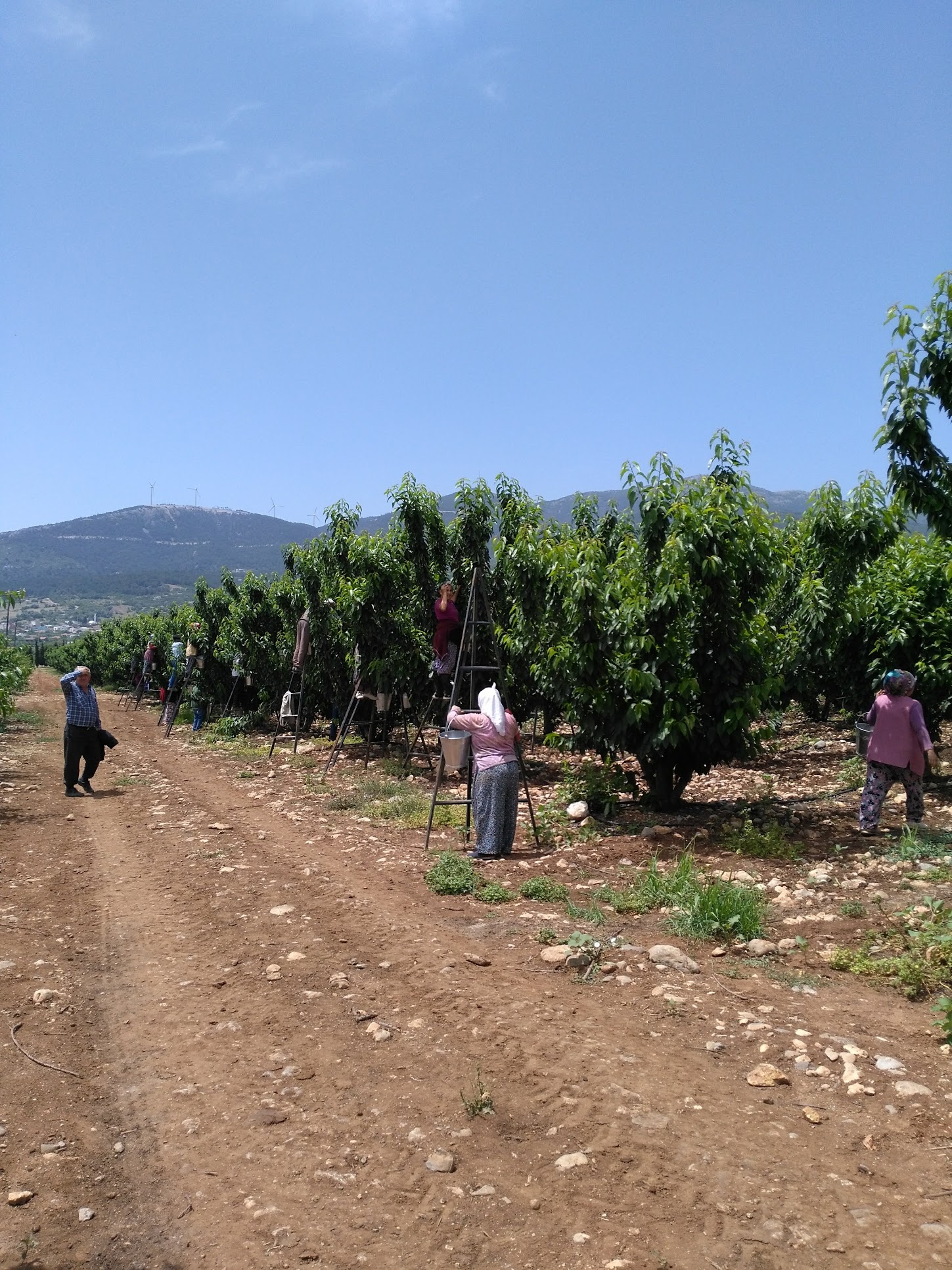
The orchard team members described their relationship to the cherry trees through notions of nature's unpredictability and supremacy. This was because pollination and fruit set in sweet cherries played such significant roles in yield and fruit quality, yet both were unpredictable and varied dramatically from one harvest to the next. As well, cherry picking, done with bare fingers to prevent damaging the fruits or accidentally removing fruit spurs that blossom into next year's cherries, required a certain level of delicacy. So, the orchard management team, all of whom were men educated in horticulture, took it upon themselves to 'protect' the divine yet fragile fruit (and the tree) from the picker's crude hands. In situations where the pickers cause injury to the stems or break the fruit spurs, the members of the management team literally lost it on the pickers, once taking it as far as threatening to make a woman picker apologize from the tree. The management team referred to the trees as their kids that they raised through hardships. It was hard to ignore the patriarchal undertone in such interactions.
When the harvest is near and the fruits are still not sizable enough, the orchard management team interfered with the biological growth process by applying chemical agents that instigate compressed bloom for fruit maturity. After all, the earlier cherries went out on the market, the more profits the company made. In that context, they used metaphors of induced labour. Just as labour was artificially induced by administration of medical treatment to women's bodies in the case of induced labour, the management team saw themselves as doctors who sped up the birth process for the hence feminized cherry tree. The masculinity that permeated the relationship between the orchard management and the cherry trees was an illustration of how rooted dynamics of gender were coopted into capital's constant need to control and discipline labour and nature.
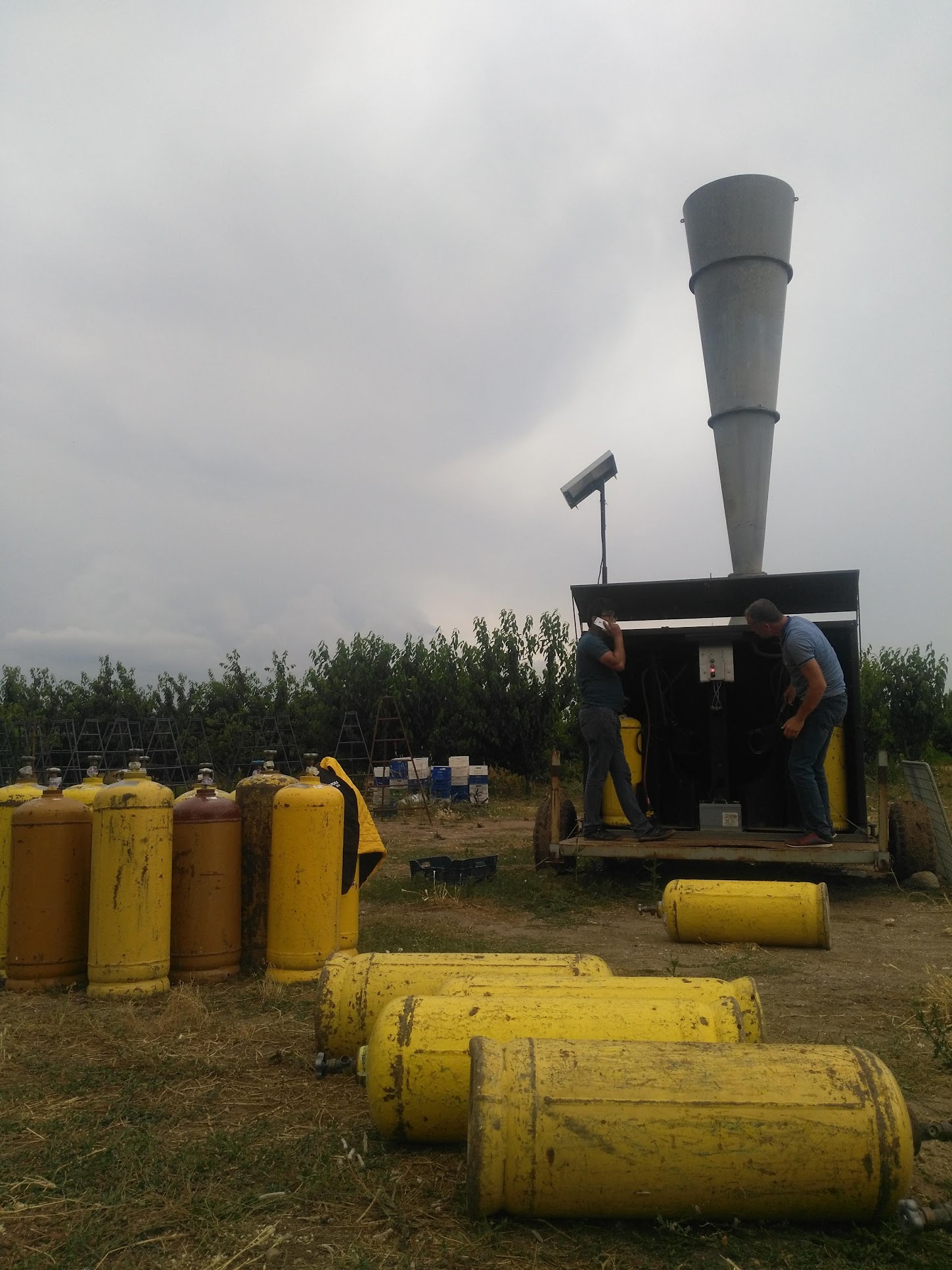
Capital's constant need to control and discipline labour and nature manifests in quite absurd ways. This grotesque machine is a hail-cannon. Since rain or hailstorm can inflict dramatic damage on cherries, the growers use this device when they see gray and heavy clouds signaling a potential hailstorm or, as I witnessed during my orchard visit, a rainstorm. I took this picture when the orchard manager decided to switch on the hail cannons to split apart the rain clouds. In the above photograph, members of the management team are taking instructions from their manager on the phone as to how many acetylene gas tanks are to be used.
These tanks were expensive. Therefore, the decision to use the hail-canon was a serious one, adding quite a bit of stress on top of the existing anxieties the management team had been demonstrating. After all, they had to be accountable to the company's management for each decision they took throughout the harvest.
That day, the hail-cannon sent loud and repeated sonic blasts into the air every a few seconds for about 15 minutes. These waves travel through the cloud formations, creating a disturbance. Manufacturers claim that this disturbance disrupts the growth phase of hailstones. The orchard team argued that the anti-hail cannon also worked for disrupting the formation of rainstorms by splitting apart the clouds. When I asked the members of the management team their opinion as to whether or not the hail cannon really worked to avoid rain, they invariably told me that they believed that it worked. "You can never know for sure what really worked" said one of the team members, "but we must do whatever we can to avoid rain during harvest".
In the meantime, the local farmers were not content with the use of these weather-altering cannons. They thought that these cannons prevented ordinary rainfall on their fields affecting acres of crops. In fact, they filed a lawsuit against the company which later resulted in the company's favour as the expert meteorologist dismissed the hale-cannon's ability to avoid rainfall.
While these devices frequently engendered conflict between farmers and other neighbours when used, every party involved acknowledged that there was not much scientific evidence for anti-hail cannon's effectiveness. Yet, the orchard management, despite their neighbour's discontent, fired the cannons because they could not afford risking rainfall during harvest season and took all measures available to them.
Another complaint about the anti-hail cannons came from the cherry pickers themselves, due to the noise emitted by hail cannons. The orchard management had fired the anti-hail cannon without informing the cherry-pickers beforehand. Hearing these explosion-like sounds all of a sudden, some pickers who had no previous experience with the anti-hail cannon noise, ran towards the vans that transported them to the orchard. Mind you, armies used sound cannons to terrorize populations into submission during times of war. The fact that the extremely loud anti-hail cannon was activated without informing hundreds of cherry pickers working across the orchard demonstrated once again how the invisibility of labour in agriculture was reproduced by the everyday choices of the management team.
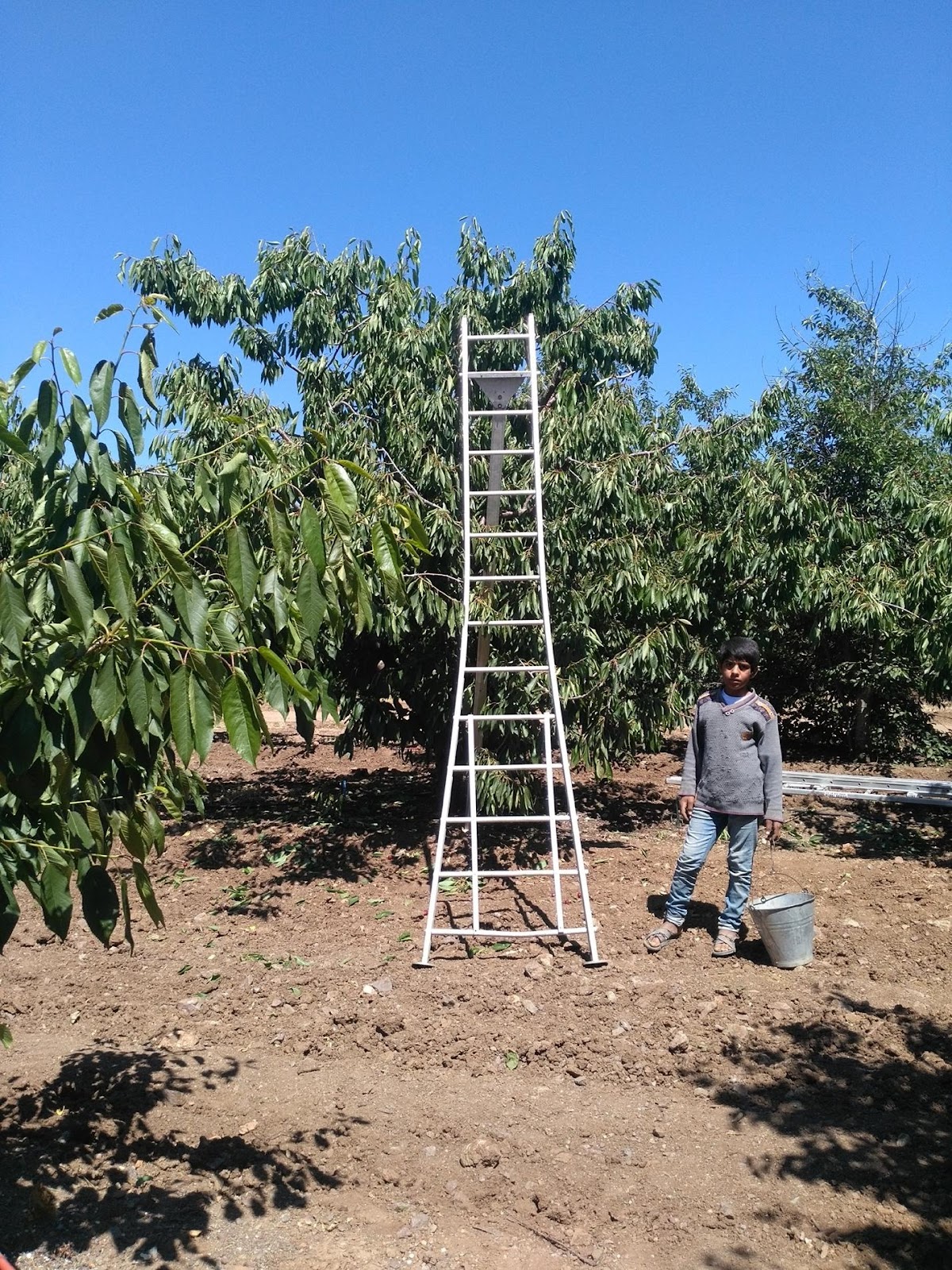
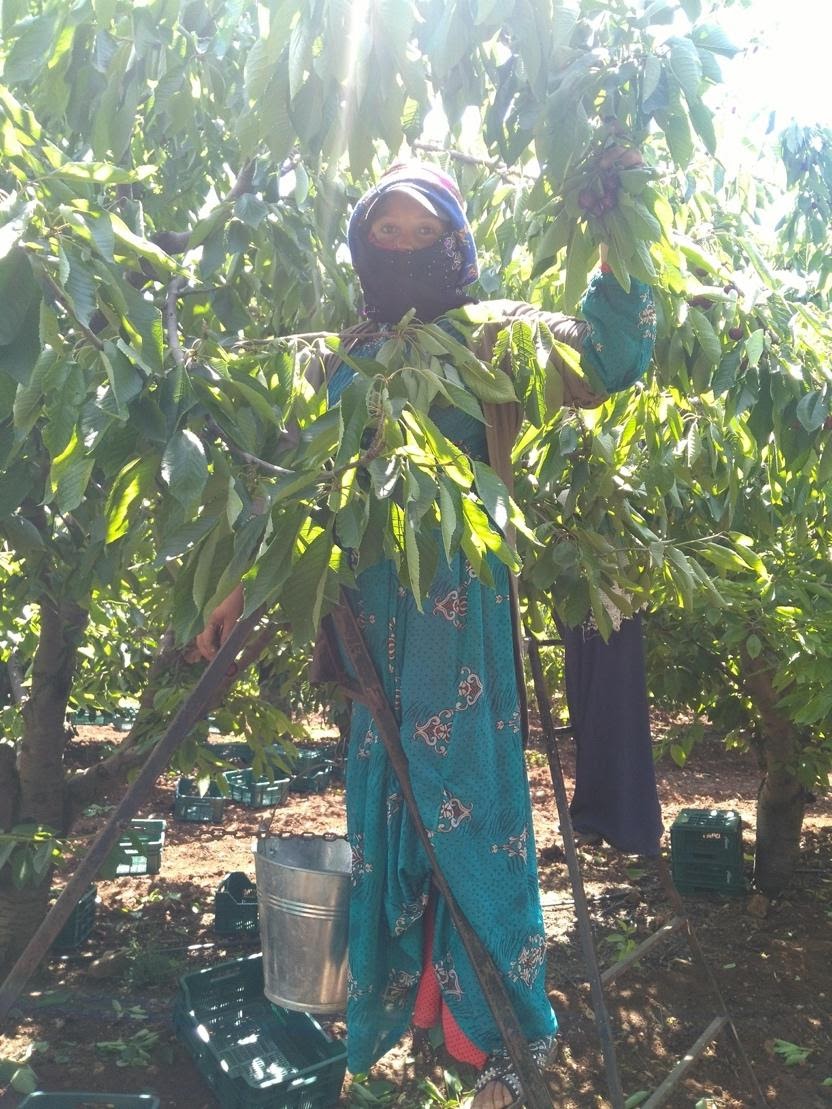
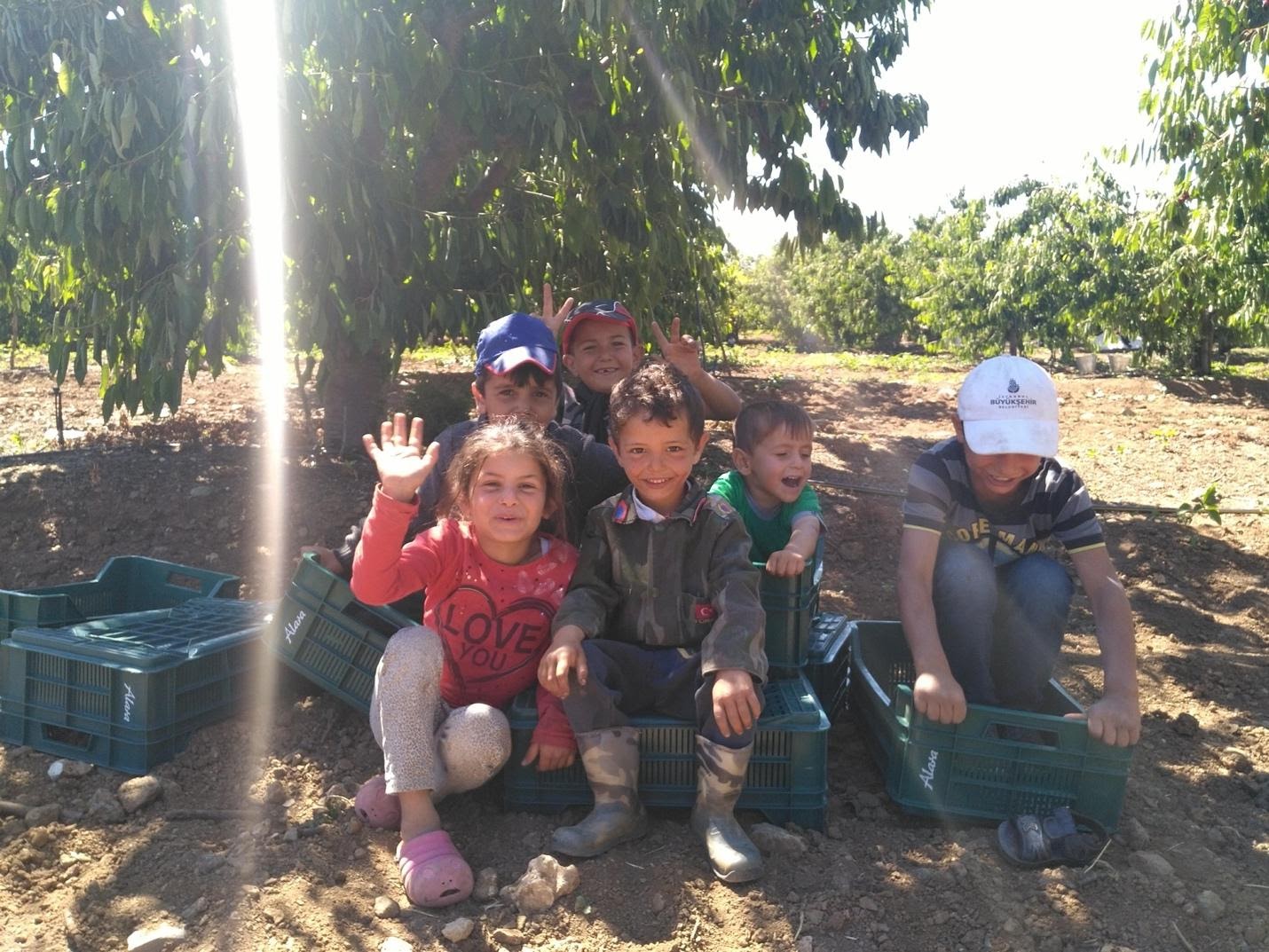
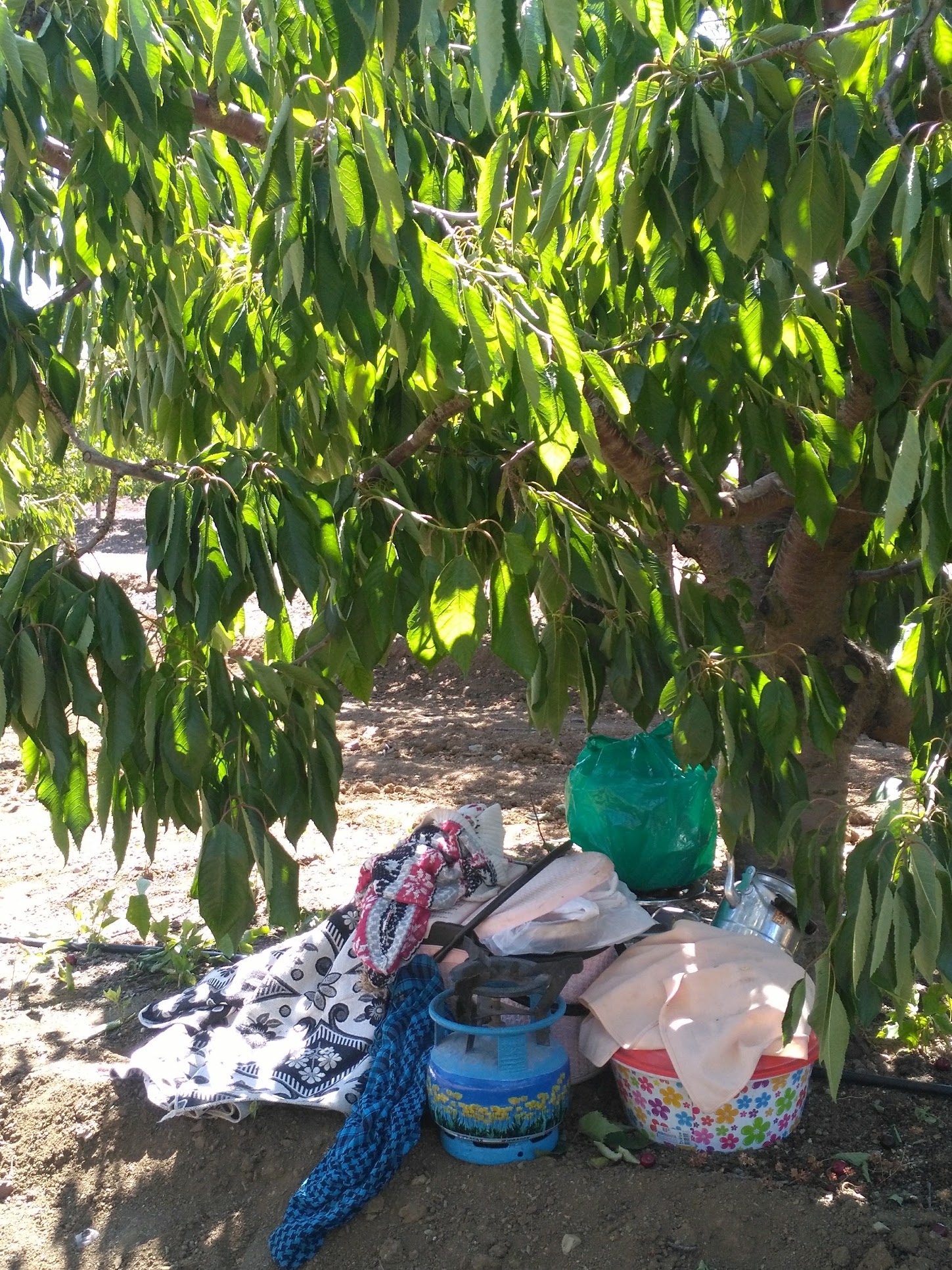
Nil ↗ was born in Istanbul, Turkey a while ago. She has always been interested in food and how food shapes and is shaped by communities. After attending the chef training program at the Istanbul Culinary Institute, Nil migrated to Vancouver, BC in 2011 and has spent the next 4 years working as a cook, designing and delivering cooking and gardening workshops newcomers at the Kiwassa Neighbourhood House, teaching the Growing Kids program at the Tillicum Elementary School and performing coordinator and community organizer roles the Farm to School British Columbia Regional Hub. In 2015, with a desire to understand more about food systems, Nil moved to Montreal to do a master's at the Department of Geography, Environment and People, which led to her current enrollment in the PhD program in Human Geography at the University of Toronto. Currently, she is writing her dissertation on export-oriented sweet cherry production in Western Turkey. Based on ethnographic fieldwork among large groups of cherry-pickers marked with gender and racial diversity, her work unveils how fresh foods like sweet cherries find their way to the supermarket shelves. Following cultural and ecological interactions between humans and non-humans, Nil hopes to tell a story that renders visible the typically invisible web of uneven power relations at the cherry orchard.
My doctoral research aims to trace the conjoined dynamics of rural social differentiation, environmental change and migrant labour in Western Turkey. The Aegean littoral positioned on the eastern side of the Mediterranean Basin is at the heart of both current forced migration flows and Western Turkey's re-emerging export-driven fruit production. Thus, the region presents a unique context where heightened vulnerabilities of food production and deepened social contradictions of the global food networks co-exist.
In my work, I situate the recent global food production trends in the context of uneven development regimes and today's forced migration flows. I do so for a more holistic analysis of agro-migration developments worldwide. As far-away relations have increasingly come closer and complicated our understanding of place and space, linking food consumption trends in Europe with the transformations in agricultural production in Turkey offers an analytical tool for understanding similar global trends elsewhere.
My doctoral research aims to trace the conjoined dynamics of rural social differentiation, environmental change and migrant labour in Western Turkey. The Aegean littoral positioned on the eastern side of the Mediterranean Basin is at the heart of both current forced migration flows and Western Turkey's re-emerging export-driven fruit production. Thus, the region presents a unique context where heightened vulnerabilities of food production and deepened social contradictions of the global food networks co-exist.
In my work, I situate the recent global food production trends in the context of uneven development regimes and today's forced migration flows. I do so for a more holistic analysis of agro-migration developments worldwide. As far-away relations have increasingly come closer and complicated our understanding of place and space, linking food consumption trends in Europe with the transformations in agricultural production in Turkey offers an analytical tool for understanding similar global trends elsewhere.